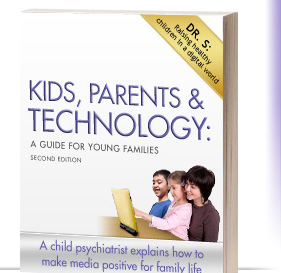2.8.10
Neuroscience is beginning to teach us about how complex functions like empathy actually work.
Our brains are pre-wired to connect us with others. We have special neurons – mirror neurons — that can react to what we sense others may be doing or feeling. How this process develops is then determined by our early relationships, and how this information is processed is what makes us more human than other primates. Empathy is an inborn human ability that can be shaped further by life experiences in which family life is crucial.
Take the Golden Rule, and see how complicated it is to actually ‘do unto others as you would have them do unto you.’ To truly get there, we have to have many brain calculation abilities. Certain brain disorders, inborn defects in parts of the system, and poor early experiences can all compromise this very complex process, yet most of us of us have a range of normal empathic abilities.
How does the ‘connectivity’ that new technology brings affect all of this? In early life, eye-to-eye, face-to-face contact and physical touch are crucial for the development of needed brain circuits. Sometimes, parents who are unintentionally distracted by an ever-present TV or intrusive smart phone or computer are not present enough to connect with their young kids, and may harm the development of these circuits.
We must keep our babies’ brains green in this area! I describe the mind/brain calculations we need to make empathy and the Golden Rule work and what parents can do to use technology to benefit family life and development of children in my new book.



The Huffington Post: The Empathic Web and The Family Education Network: How to Teach Empathy
2.8.10
Neuroscience is beginning to teach us about how complex functions like empathy actually work.
Our brains are pre-wired to connect us with others. We have special neurons – mirror neurons — that can react to what we sense others may be doing or feeling. How this process develops is then determined by our early relationships, and how this information is processed is what makes us more human than other primates. Empathy is an inborn human ability that can be shaped further by life experiences in which family life is crucial.
Take the Golden Rule, and see how complicated it is to actually ‘do unto others as you would have them do unto you.’ To truly get there, we have to have many brain calculation abilities. Certain brain disorders, inborn defects in parts of the system, and poor early experiences can all compromise this very complex process, yet most of us of us have a range of normal empathic abilities.
How does the ‘connectivity’ that new technology brings affect all of this? In early life, eye-to-eye, face-to-face contact and physical touch are crucial for the development of needed brain circuits. Sometimes, parents who are unintentionally distracted by an ever-present TV or intrusive smart phone or computer are not present enough to connect with their young kids, and may harm the development of these circuits.
We must keep our babies’ brains green in this area! I describe the mind/brain calculations we need to make empathy and the Golden Rule work and what parents can do to use technology to benefit family life and development of children in my new book.